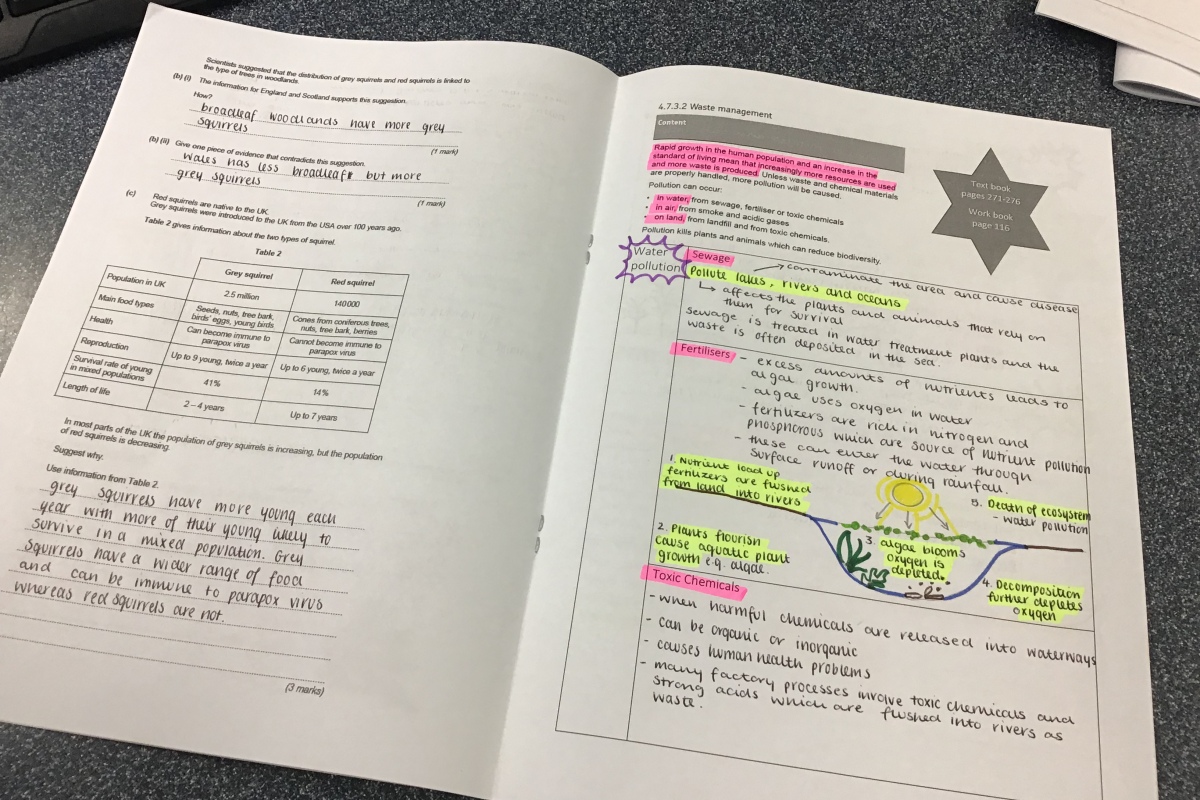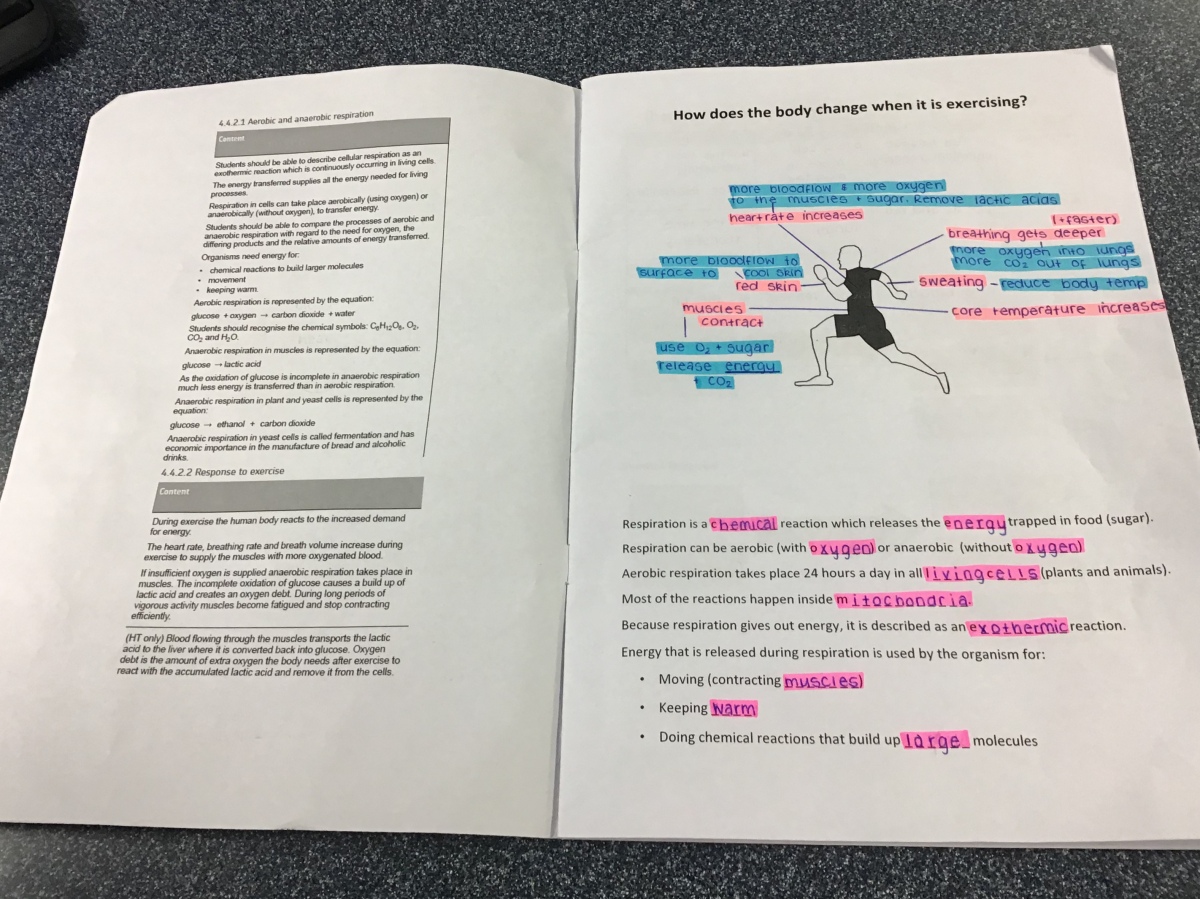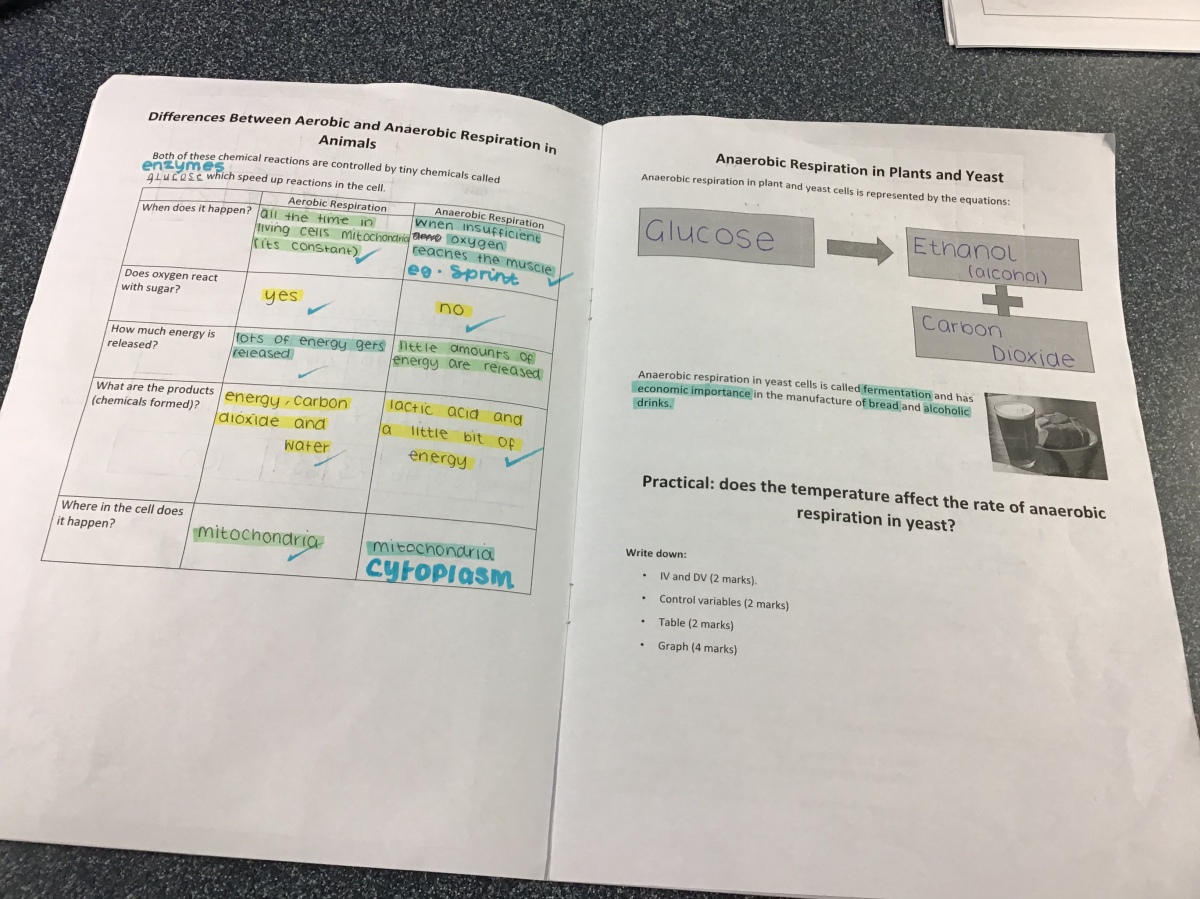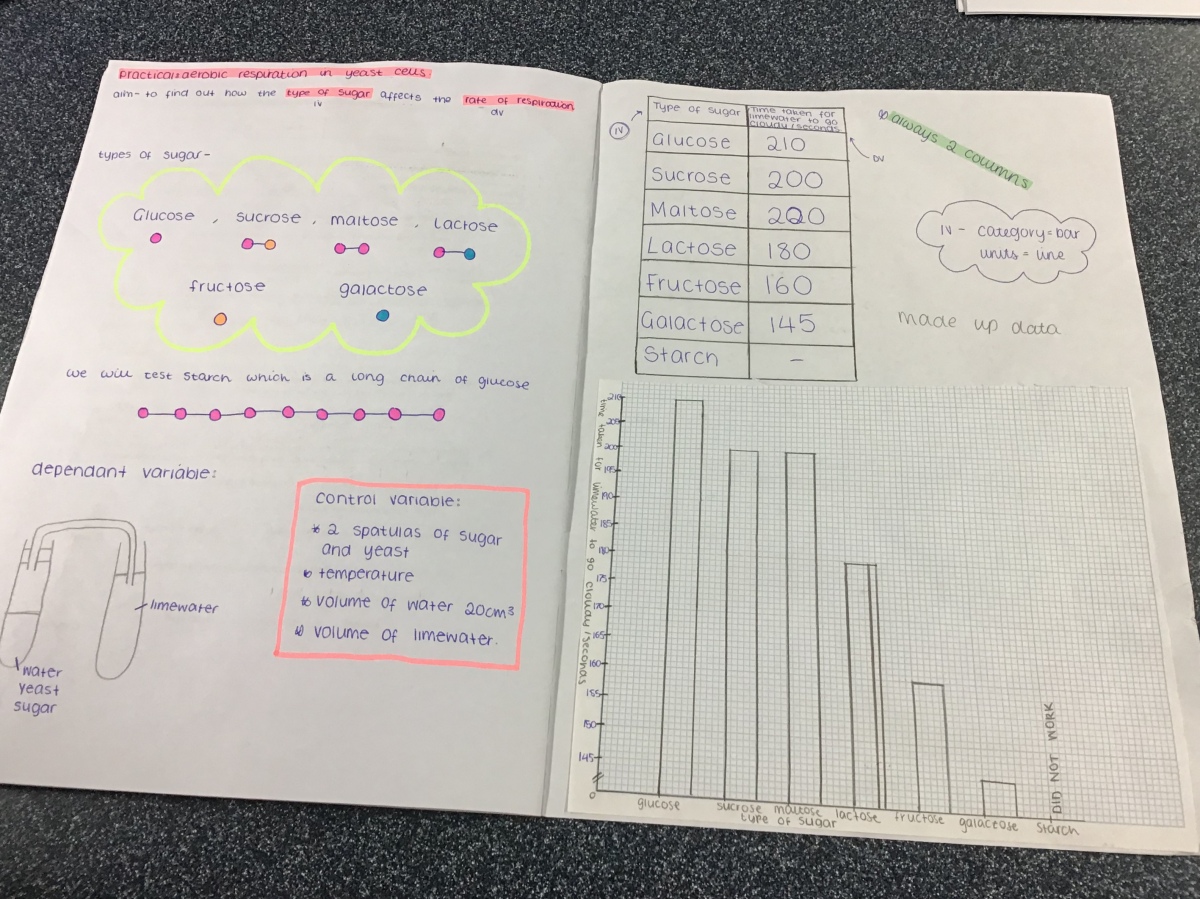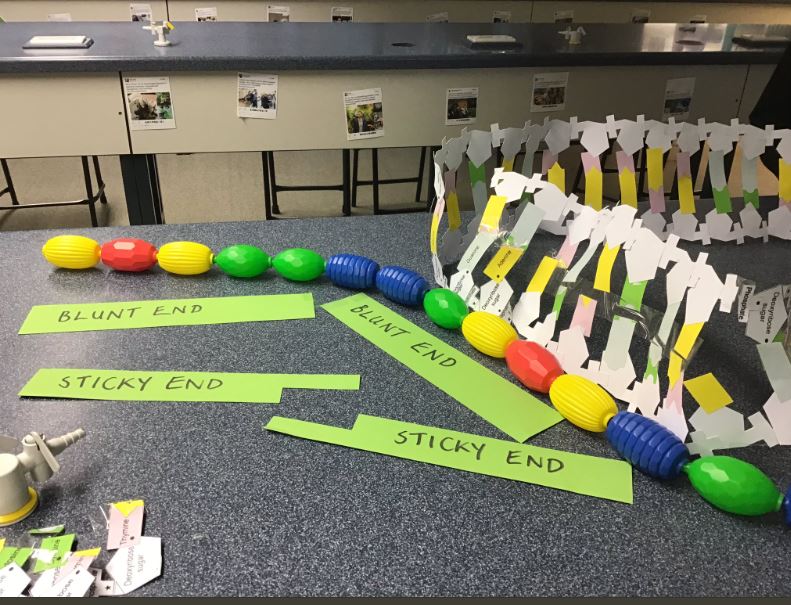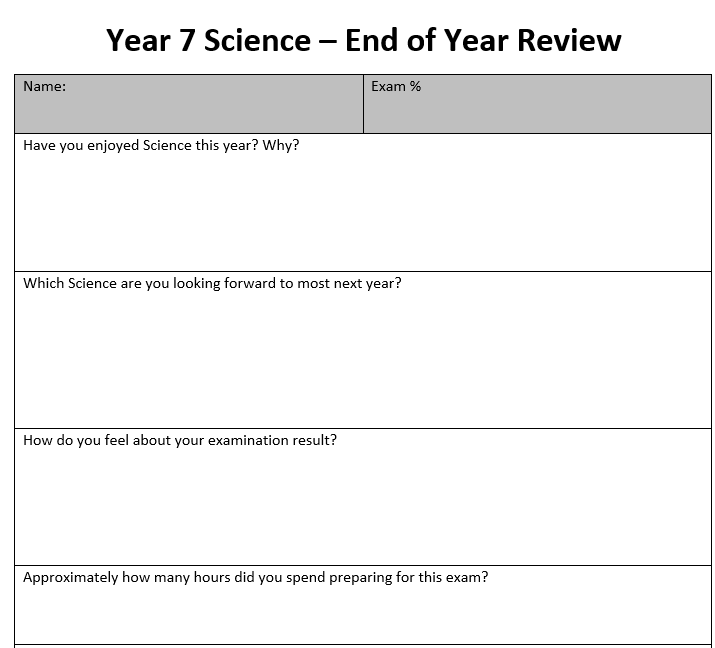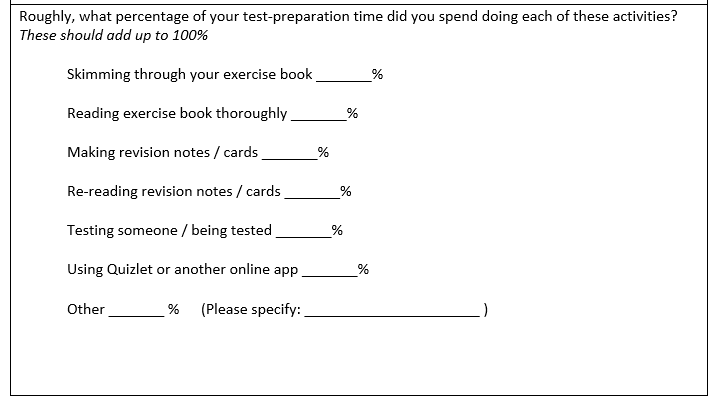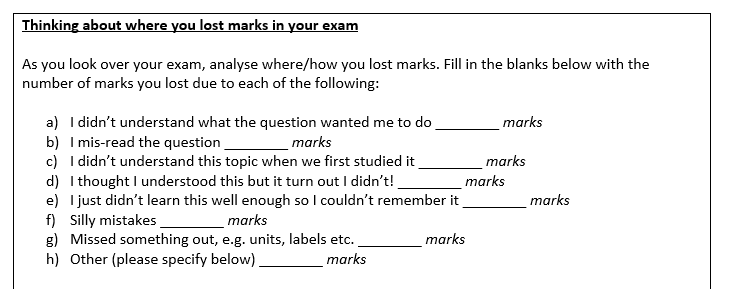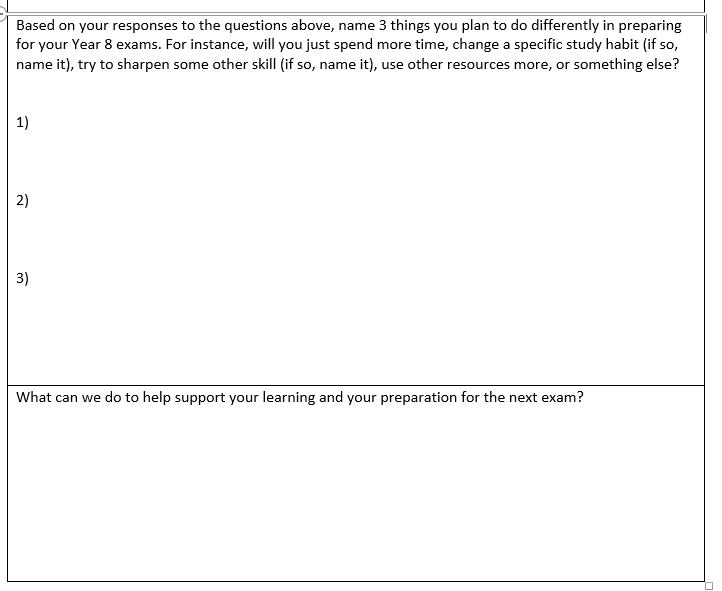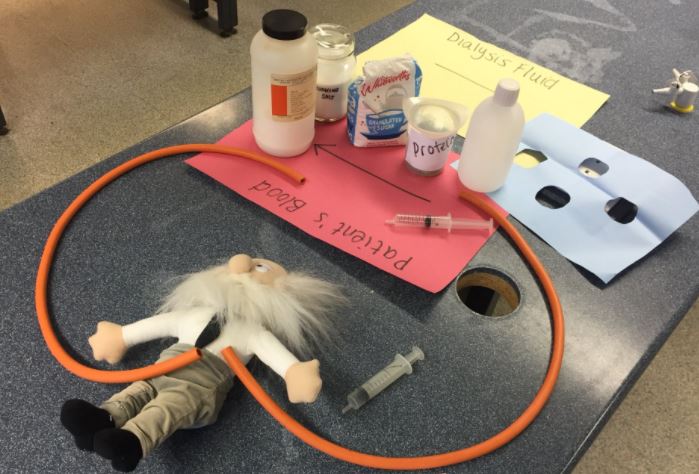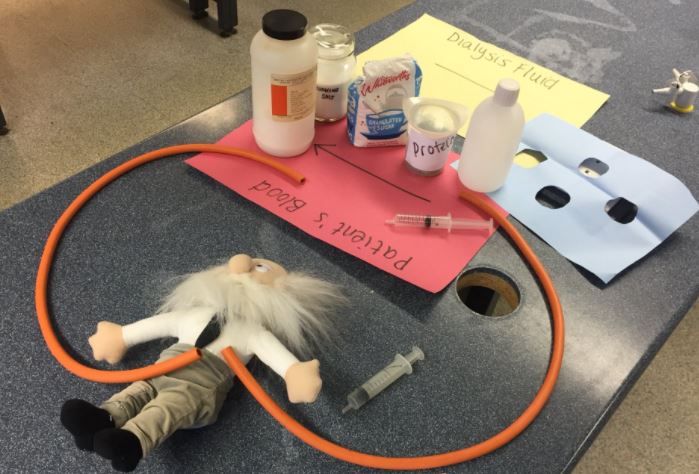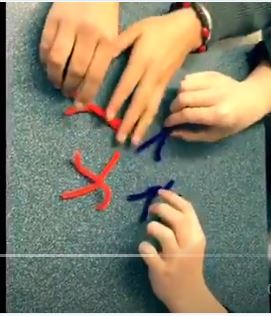At this time of year, with Year 11 and Year 13 students have finished the taught element of the course and are busy preparing for their public exams. Whilst there are a lot of ‘fun’ activities they could do to prepare, in my opinion there is nothing more useful than practising exam questions. I think we need to send the message to our students that there is no magic revision pill, and that learning requires hard work. Making and playing board games etc could well take an hour of useless messing about for a ten minute gain.

Developing exam technique from the start of the course:
I don’t just confine this type of practice to exam classes; year 9, 10 and 12 have many of their homework’s based around practising past paper questions. With Year 9 and 10 especially I try not to mention exams too often during lesson time and just enjoy learning about the content, but I do introduce GCSE skills from Year 9 (we have a three year GCSE). My current year 9 class have tried out quite a few GCSE questions now and are getting too grips with their requirements for precise language. A few weeks ago I was looking at a respiration question with 9AG and we talked about including “magic words”! We looked at a 3 mark question and I asked how do I know how many magic words to put down. Joe replied “4” which is what I’ve been training them to do. We discussed the “magic words” to include (oxygen, energy, anaerobic, lactic acid, fatigue) and then they put them into sentences.
Year 10s get past paper questions for each topic so they can see them kinds of things that get asked. They’re currently working on Required Practical 10 and can see that the same points crop up over and over again in the mark schemes, and are making a careful note of these.
Year 12 (and 13) have chapter by chapter past paper question booklets which they generally do for homework. I try and include pretty much every past paper question I’ve found on the topic by going through past papers and having millions of tabs of Word open. I make markscheme booklets too. They’re due for an update as I need to include more some new specification questions. Because they’re topic specific they tend to be AO1 and AO2 questions. I actually love it when the students start to moan: “Argh not that question again! I’ve written that same answer out 3 times now! Mutation changes the DNA sequence, thus the primary structure of the protein. Hydrogen bonds form in different places. Tertiary structure changes. Active site changes shape. Enzyme substrate complex can no longer form” I know my Year 12s could answer that question with their eyes shut now, so if they get it in their Alevel they can zoom through it and spend more time on the more taxing AO3 questions.

Once a topic is complete we make a Common Exam Questions sheet (affectionately known as a yellow sheet to the students because I have them printed on yellow paper to make them stand out). The aim of this is to check wording against the markscheme and make a note of the points accepted year after year. Here’s an example of a “yellow sheet” for one of the Alevel topics.

Preparing for the GCSE examination
Although much of the leg work is done throughout the course with the ideas mentioned above and frequent retrieval practise, the remaining term in Year 11 and Year 13 is dedicated to practice. Each student in our department is given a stack of topic by topic past paper questions with markschemes and is expected to work through them in lesson time and at home. I have sticker charts to monitor progress and harness the power of peer pressure for good! My Year 11s have a few taught sessions about skills, but then crack on independently. I do not re-teach content and I do not run extra revision sessions outside the lesson; in my opinion this sends the message that it was not important to pay attention the first time around. Having said this, I will always spend time with students who have tried to help themselves but have hit a brick wall.
In my current year 11 lessons I circulate around the room, offering help where needed. Some work on their own, and some prefer to sit in pairs and talk through the question together. We work hard for 30 minutes, then stretch our legs for 5 minutes then crack on again for the rest of the lesson. I encourage them to “work hard and play hard” – in class they need 100% focus and when relaxing they need to completely switch off.
They quickly spot how to answer questions by using the markschemes and get faster and faster at answering. When it comes to their exam, their cognitive load will be greatly reduced, allowing them to dedicate more of their memory to new questions. Year 11 students have 22 topic question packs, but together by my HoD, and the 10 required practicals with associated questions as you can find on my blog. They also have a booklet of maths questions and a booklet of “how science works” questions to work through. I strongly dissuade them from making pretty notes – notes and flash cards etc have been made throughout the course for end of year exams and mocks; now is the time to practise.
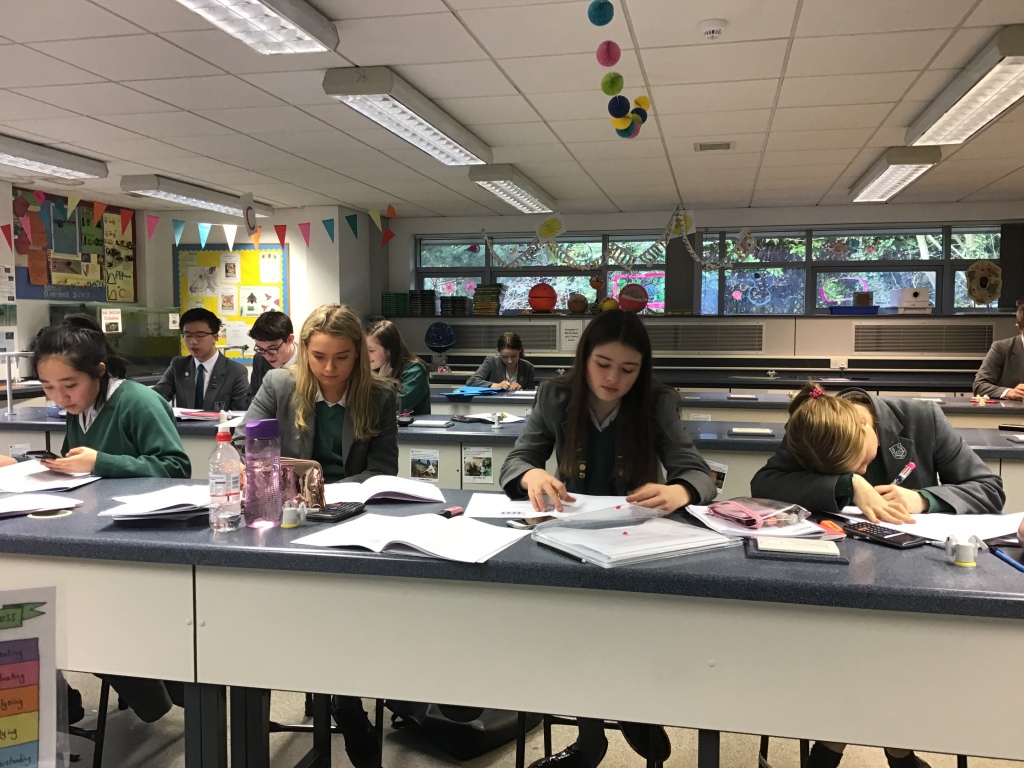


Preparing for the Alevel examination
In much the same way, my Year 13 students are spending their time looking at past paper questions, as well as some taught sessions on skills. They too have their own sticker chart (because you’re never too old for stickers). Again, this harnesses the positive power of peer pressure and drags along some of the less motivated students. It amazing to see how excited 18 year olds get at the start of the lesson, putting their stickers up!

Their chart has sections for topic-by-topic question packs which I have told them are their responsibility to do at home, maths and stats practise, something I call “How Science Works” (a term from an old spec – concepts like experimental design, placebo effect, sample size etc), required practical questions, full past papers and old spec synoptic papers. A colleague is working on the synoptic essay with them. We have managed to sit down and talk through four required practicals per lesson for the last three lessons, and they’ve completed some past paper questions at home. I hope to be able to upload some of this material this weekend if I have time.

Apologies if I’ve misused practise / practice in this post; I tried!

